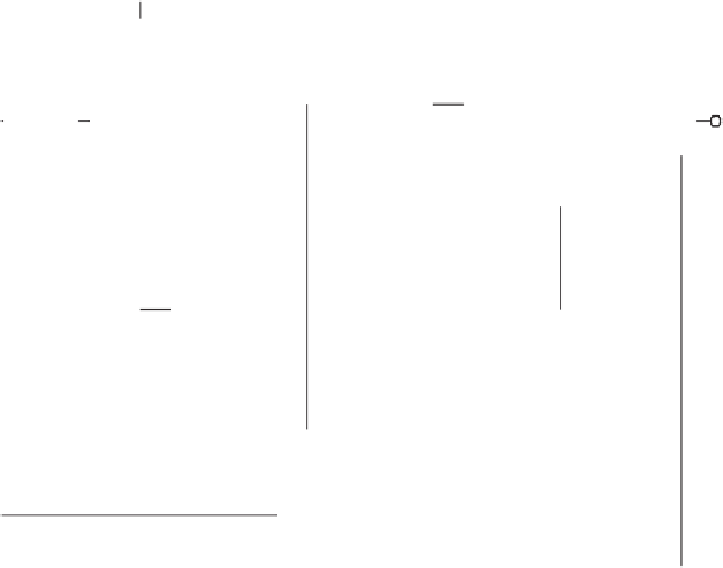Biomedical Engineering Reference
In-Depth Information
5V_ISO
5V_ISO
2.5V_ISO
IC11
LM4250
R20
620k
IC12
LM4250
7
5
7 5
R21
10k
3
+
ISO CHANNEL
OUT
6
3
2.5V_ISO
SW3
+
2
6
-
NOTCH OUT
2
-
4 8 1
8 1
4
Rectifier In/Out Selector
R22
1M
R23
1M
R24
1.2M
I
I
R25
10k
R26
2
D6
HSMS2802
3
2.4M
1
R27
2.4M
Figure 2.10
This circuit can be used to full-wave-rectify the signal at the output of the notch filters of Figure 2.9. This signal-processing
operation is often used in electromyography (EMG) to yield a signal proportional to the force generated by a muscle. The full-wave rectifier
can be bypassed through SW3.
Power for the circuit is supplied by the two isolated dc/dc converters (IC2 and IC3)
shown in Figure 2.12. 5V_ISO feeds the parts of the circuit that are in galvanic connection
with the biopotential source, while
5V_DATA_ACQ feeds the analog signal isolator's
output circuit. IC1 bu
ers the output of the resistor divider formed by R2 and R3 to
generate a synthetic analog ground halfway between the isolated ground and the isolated
supply (5V_ISO). The dc/dc converters operate from a single
ff
15-V power supply. An
appropriate choice is a switched ac/dc medical-grade power supply, manufactured by
Condor, model GLM75-15.
ACTIVE FILTERS
Passive
filters have their advantages: They consist of simple components, use no gain
elements, and require no power supply. Their noise contribution to biopotential signals is
limited to the thermal noise from their resistive components, and they can be used in appli-
cations which require them to handle large currents and voltages. Despite this, there are many
applications which require
fi
filter could not achieve without
the use of inductors or which would become cumbersome and impractical because of the
interactions between successive stages. This is where active
fi
filter functions that a passive
fi
fi
filters come to the rescue. Active
fi
filter func-
tion. Op-amps can be used to simulate the characteristics of an inductor but without the
bulk and expense. In addition, higher-order
filters use op-amps, along with resistors and capacitors, to implement the desired
fi
filters can be implemented with ease because
cascaded stages have little interaction with each other.
fi









































Search WWH ::

Custom Search